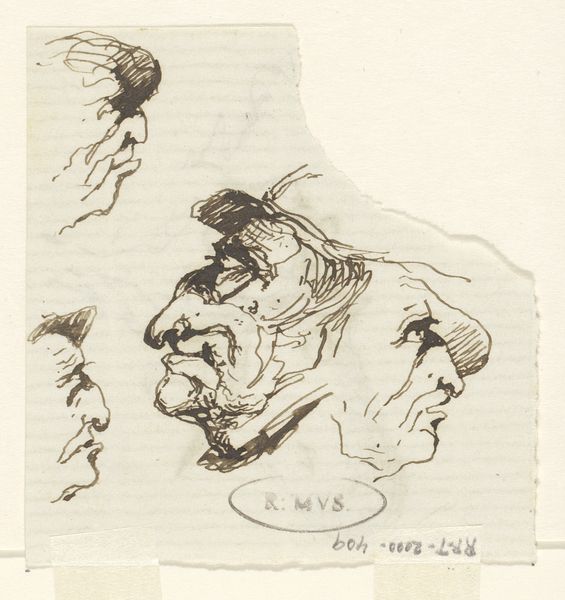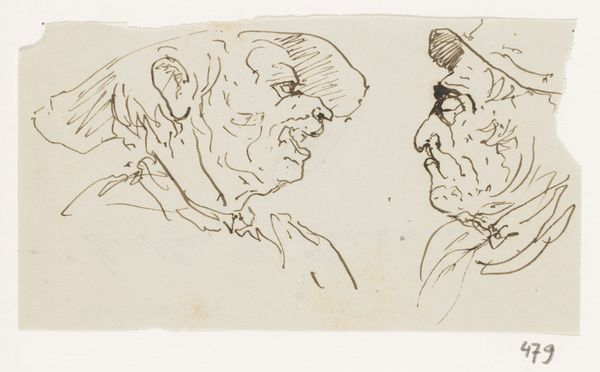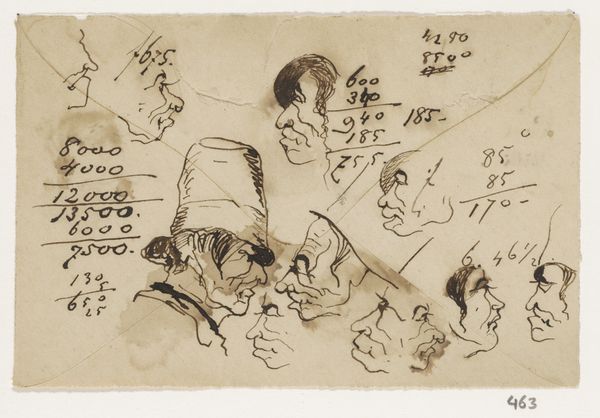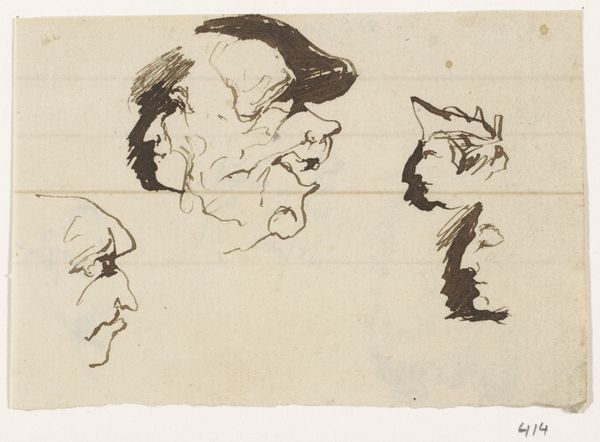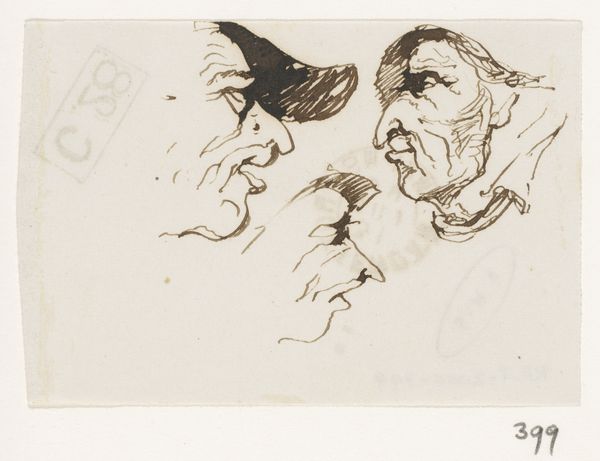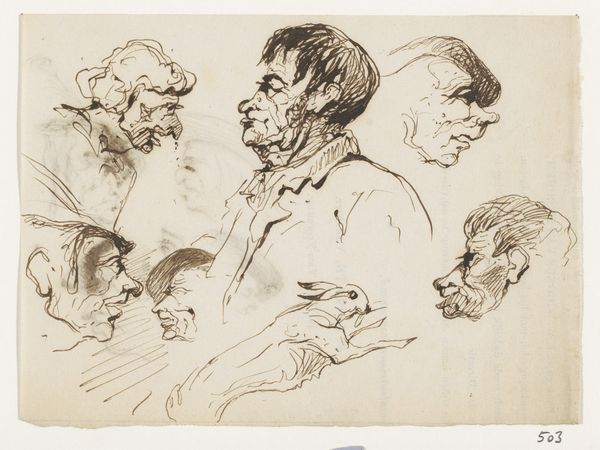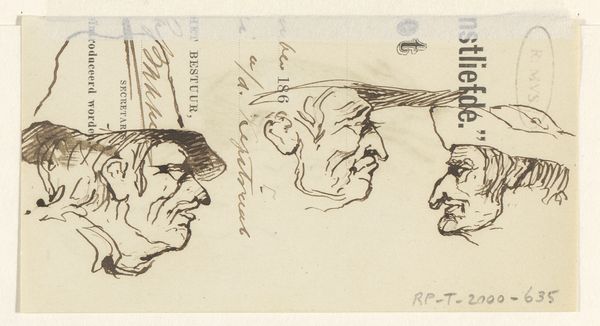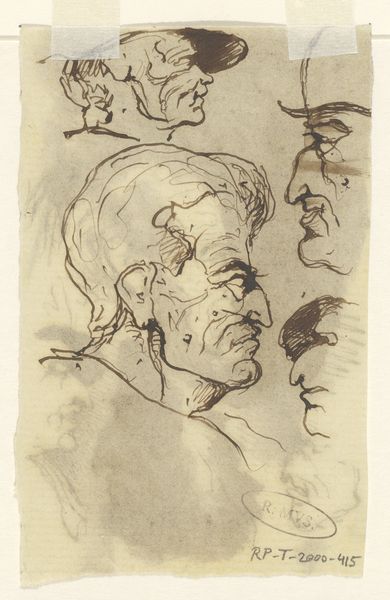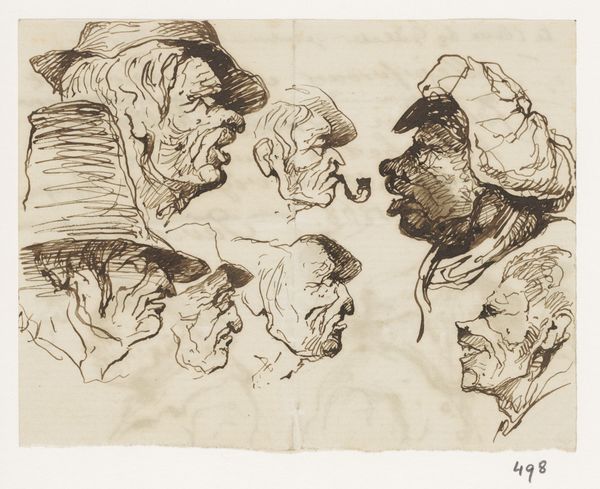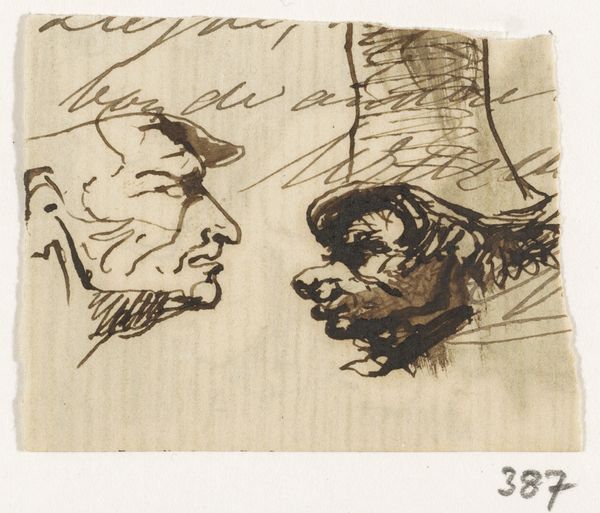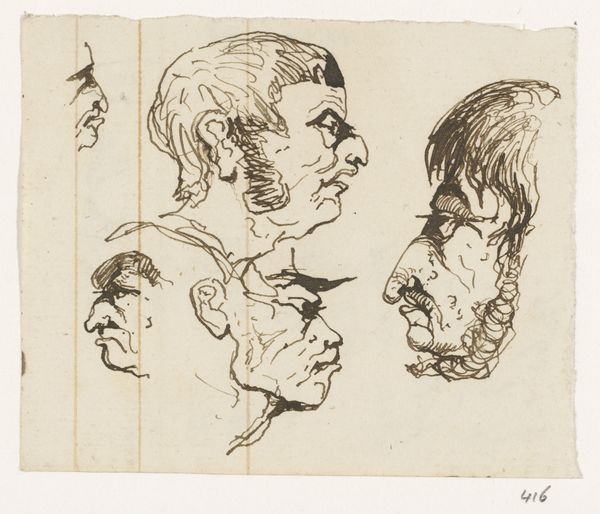
Dimensions: height 73 mm, width 112 mm
Copyright: Rijks Museum: Open Domain
Editor: This ink drawing, "Koppen," created by Johannes Tavenraat sometime between 1840 and 1880, features multiple head sketches. There's something almost frenetic about the linework. What do you see in the way Tavenraat worked with these materials? Curator: Well, let's consider the choice of ink and paper at this time. Mass production of paper was becoming more prevalent, affecting the accessibility of art materials. This drawing offers a glimpse into the artist's studio practice and material constraints. Are these studies for a larger work, or ends in themselves? The economic realities inform the rapid, seemingly casual approach. Editor: So, you're saying the very affordability and accessibility of ink and paper at the time might have influenced his style? Curator: Exactly. Ink wash lends itself to quick studies and exploration of form, suggesting a workshop context, maybe? Was this a preliminary investigation where multiple heads develop possible future work? How might access to materials like this empower emerging artists? Editor: It's interesting to think about how the materials themselves influenced not only the technique but also the purpose of the artwork. I hadn't considered that. Curator: Considering the relationship between material, labor, and artistic intention gives us a richer appreciation. What do you make of the relationship to Romanticism? Are these idealised heads, or naturalistic depictions of real working class faces, a burgeoning area of research? Editor: That helps me understand it better, looking beyond just the image itself to the context of its creation and use. Thanks! Curator: Precisely. Examining the social and material conditions allows for a greater understanding.
Comments
No comments
Be the first to comment and join the conversation on the ultimate creative platform.
